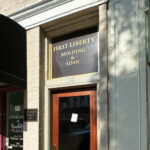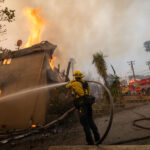‘Tis the season to spread holiday cheer, but on the roads this year, Washington drivers admit they say “bah humbug” instead of “ho, ho, ho” when they get behind the wheel, according to the latest driving behavior poll from Pemco Insurance.
As part of an ongoing study, the Seattle-based insurer measures how drivers view the politeness of their own driving behavior and that of other drivers on Washington roads and tracks the data with the Pemco Polite Driving Index.
This year’s trends show a six-point increase in aggressive driving on the 100-point index established by Pemco in 2009. Compared to 2009, these latest results show that while drivers continue to view their own driving as more polite than others’, overall politeness is down and aggressive driving is on the rise.
There are a number of variables that can explain how people behave on the road, according to Seattle-based psychologist Wallace Wilkins, Ph.D.
“Most people who are angry feel that they are entitled to something the world isn’t giving them,” Wilkins said. “On the road, this sense of entitlement boils down to a desire for predictability, control and respect. When some drivers don’t receive the respect they expect from other drivers, it makes them angry, or aggressive.”
Pemco’s Index tracks the frequency of which drivers say they demonstrate and observe aggressive driving such as speeding, failing to yield, or tailgating, as well as how often they witness and exhibit polite driving.
“On average, Washington drivers tell us they witness aggressive behavior about 12 times per month and that they themselves are aggressive less than two times per month. What’s notable about this is that, while the numbers are still relatively low, drivers are becoming more likely to admit they drive aggressively,” said Pemco spokesman Jon Osterberg.
Pemco calculates the Polite Driving Index by taking collective poll data regarding polite driving behavior and then subtracting collective responses about aggressive driving. Index scores above 100 represent more frequent polite behavior, while scores less than 100 on the index indicate more frequent aggressive tendencies.
In 2010, Washington drivers reported an average of 3.3 net polite gestures, which represents 133 points on the 100-point index, equivalent to a 6sixpoint decrease in politeness compared with last year’s results. In 2009, drivers reported an average of 3.9 polite gestures and scored 139 points on the index.
“As stress has increased due to the economic downturn, the desire for predictability has become even greater,” Wilkins said. “It’s common for drivers to feel as if they ‘own’ the 30 feet of pavement ahead of them. So some drivers try to enforce that sense of predictability, control and respect within the territory that they ‘own.’ When something uncontrollable happens in that space, some drivers are offended by the surprise and respond by acting aggressively.”
Among respondents, women have become significantly more aggressive over the past year and have dropped 12 points from 146 to 134 on the Polite Driving Index. This year women also say that in addition to their own aggressive driving, they witness fewer polite driving acts among other drivers than they did in 2009.
The poll finds that younger drivers tend to admit to more-aggressive driving behaviors. According to the index, those under age 35 admit they act aggressively almost three times more often than their older counterparts (3.6 aggressive gestures per month versus 1.3 aggressive gestures).
The index also shows that Eastern Washington residents drive more aggressively than Western Washingtonians. Drivers east of the mountains report 2.5 more polite gestures per month than aggressive ones and score 125 points on the index, which represents a 12-point drop from 137 points in 2009.
Western Washington drivers also became more aggressive in 2010, but lost only five points on the driving index (141 in 2009 compared to 136 in 2010).
Pemco Insurance commissioned its independent survey that asked Washington drivers several questions about driving habits and attitudes toward current Northwest issues. The sample size, 606 respondents, yields an accuracy of +/- 4.1 percent at the 95 percent confidence level. In other words, if this study were conducted 100 times, in 95 instances the data will not vary by more than +/- 4.1 percent.
Was this article valuable?
Here are more articles you may enjoy.


 Senators Launch Probe Into Demotech’s Ratings in Florida
Senators Launch Probe Into Demotech’s Ratings in Florida  Three Top P/C Insurers Account for Most of Insurance AI Patents
Three Top P/C Insurers Account for Most of Insurance AI Patents  Son of Ponzi-Accused Georgia Building & Loan Founder Now an Insurance Agent
Son of Ponzi-Accused Georgia Building & Loan Founder Now an Insurance Agent  Catastrophe Bonds Linked to Wildfires Lose ‘Untouchable’ Status
Catastrophe Bonds Linked to Wildfires Lose ‘Untouchable’ Status 

